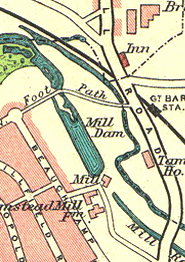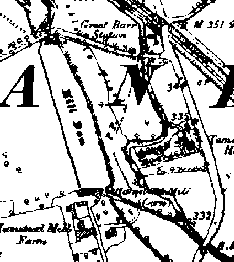The name Hamstead has been used in the distant past to relate to two different areas. Across the river Tame from the current Hamstead is the Hamstead Hall area. Hamstead Mill was also in this area. This came under the historic area of Handsworth.
Historically the key feature was the Hamstead Colliery which changed the area from being rural into a mining community. Nowadays the mine is just a memory and has been built over with houses in Walcot Drive and Amberley Green. The original pit baths became a social club linked with the West Bromwich Albion, later the Kings night club and more recently was built on with housing.
Nationally there are only two Hamstead's (without the 'p'), the other being on the Isle of Wight. There is also a place called Hamstead Marshall in West Berkshire.



